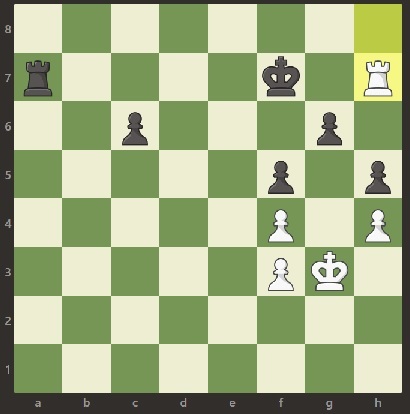Typical rook endgame situation
Logic
Level
3
In the diagram, White has an extra pawn, but how can you make use of it and win the game?
A pawn move wins
A king move wins
A rook move wins
The position is drawn with best play
This section requires Javascript.
You are seeing this because something didn't load right. We suggest you, (a) try
refreshing the page, (b) enabling javascript if it is disabled on your browser and,
finally, (c)
loading the
non-javascript version of this page
. We're sorry about the hassle.
Using the row-column labels indicated on the edge of the board, White plays the pawn move c5-c6. To stop further pawn advance, Black captures d7xc6. But this clears the 7th rank, so now White swings the rook across to the opposite corner, Ra8-h8, Black's rook captures White's advanced pawn Ra2xa7, and now White has a "skewer" attack with Rh8-h7 checking Black's king. After the king moves out of check, White will capture Black's rook with Rh7xa7. White has an extra rook for a pawn, which is enough to win the endgame.
Diagram of the skewer situation:
This maneuver of moving the rook to set up a skewer is typical in this type of endgame. To prevent it, Black needed to have his king on g7 or h7.
None of the other moves win. If White plays a king move, Black moves his king to g7, now preventing the skewer. If White plays a rook move, Black's rook captures the pawn on a7, and White has no follow-up.